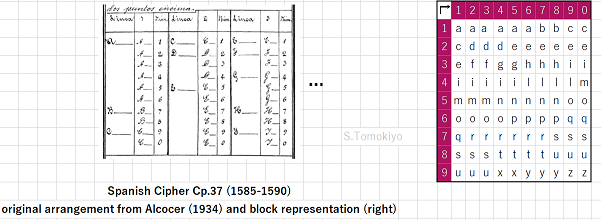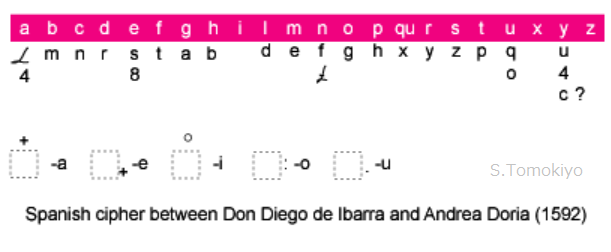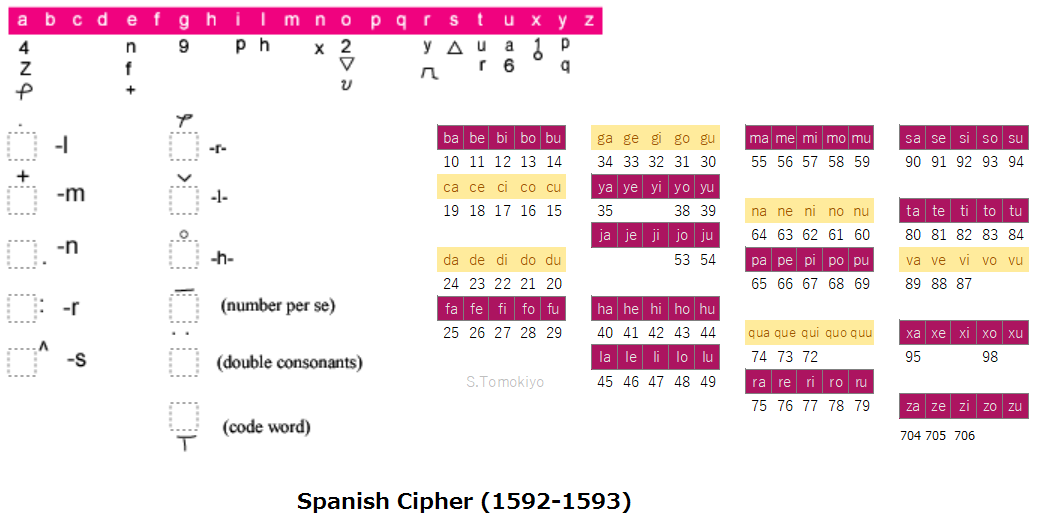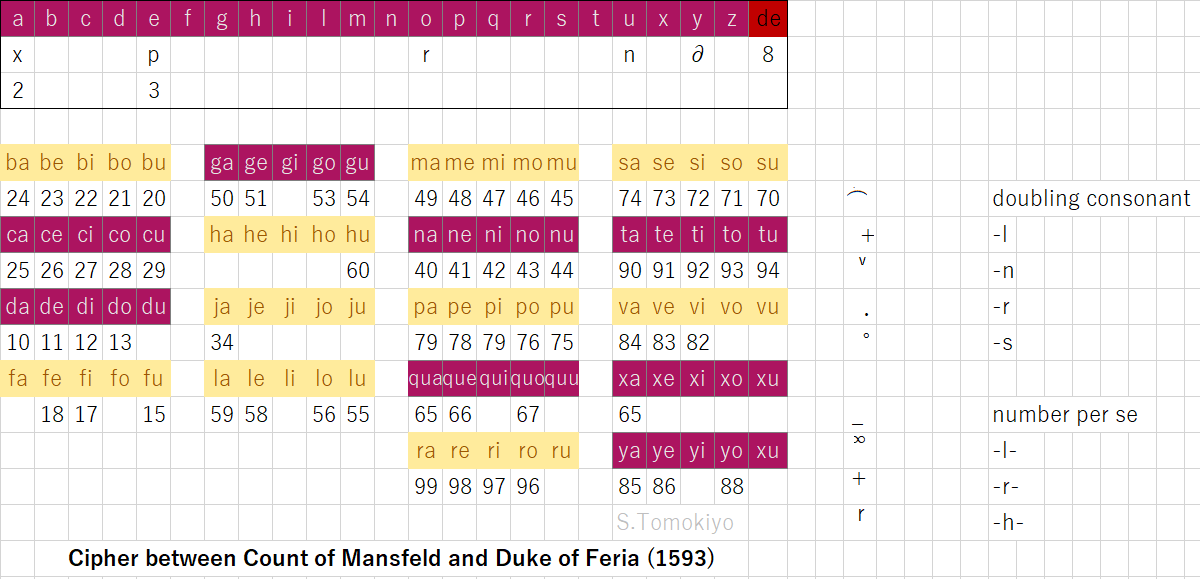This article presents a brief summary of major types of ciphers during the reign of Philip II of Spain, detailed in another article. While it was common that a nomenclature (i.e., in modern parlance, "code" for representing whole words rather than letters) was also provided, the following focuses on the "cipher" portion for representing letters and syllables.
There were simple ciphers, either consisting of symbols or figures.


A variant in simple numerical ciphers assigns figures 11-99 in a square to letters in the alphabet according to blocking of the square. This scheme is called "Tassis' table" by De Lamar Jensen.


Of the above examples, the latter corresponds to Cp.37 with its ordering of rows reversed.
The most characteristic feature of the Spanish ciphers from this period would be use of vowel indicators, i.e., symbols attached to consonant symbols to systematically form syllables.



Devos (1950) transcribes many examples of this kind of ciphers. One more example is presented in my Cryptologia article.
This kind of ciphers were not the creation of this reign. Examples are seen in the reign of Charles V as well as in Italian ciphers.
In one case, the number of indicators amounted to 15 (see the image below) but it was too many to be widely adopted in other ciphers.

Numerical cipher Cp.32 proposed by Bernardino de Mendoza in 1587 (more or less) regularly assigned different figures to different syllables rather than using vowel indicators. The scheme was employed in some of the subsequent ciphers in combination with vowel indicators.



This scheme was used a century later as the image below (for which see another article).

Cg.57 (see another article) is peculiar in its code words in the form "x00", i.e., an alphabetical letter plus a figure 1-51. Moreover, although a substitution alphabet of the conventional form is provided, the code words include single letters. This can avoid a breakthrough for codebreaking by focusing on ciphertext portions enciphered letter by letter. Inclusion of single letters in the code anticipates ciphers in the late seventeenth century.
Benasco's Cipher (1597) is a cipher with a numerical nomenclature. Diacritics (: ^) seem to be used consistently but may be meaningless.
|
108(an) 118(castello) 159(ca) 184(donde) 183(con) 188(car) 198(da) 202(del?) 203(do) 204:(de) |
233(em) 240(es) 246(en) 277:(gente?) 292(ga) 351:(mente) 359:(muntion) 378:(name) 390:(para) |
409(la) 429(lan) 439(les) 441(los) 446(ma) 447(me) 449(mi) 478(mos) 480(nu) 483(na) 488(no) 494(nil) |
561(pol) 573(par) 577:(pre) 579:(pro) 619(sa) 622(ra) 623(ra) 659(s) 690(ti) 699(te) 701(ti/tr?) 716(tan) |
732(u) 733(va) 737(ve) 741(vo) 756(van) 775(xe) 808(y) 848^(za) |